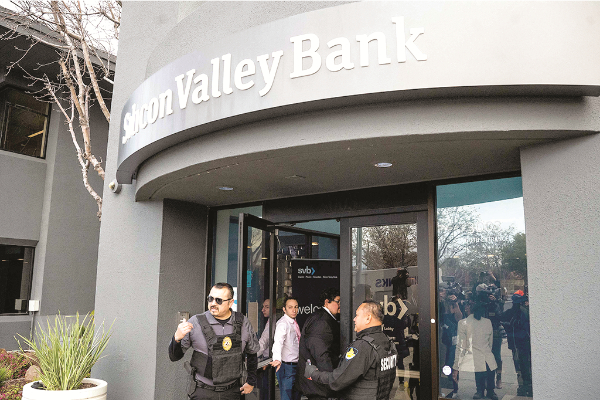Banks rating intact despite US collapse
Published on: Saturday, March 18, 2023
By: Bernama
 Security guards and FDIC representatives open a Silicon Valley Bank (SVB) branch for customers at SVB’s headquarters in Santa Clara, California. (AFP)
Security guards and FDIC representatives open a Silicon Valley Bank (SVB) branch for customers at SVB’s headquarters in Santa Clara, California. (AFP)
Kuala Lumpur: RAM Rating Services Bhd (RAM Ratings) sees no rating impact on Malaysian banks from the failure of the United States Silicon Valley Bank (SVB) and two other smaller banks last week.The rating agency said that in Malaysia, banks’ credit fundamentals remained robust and resilient supported by strong regulatory supervision to weather heightened volatility in global financial markets.
ADVERTISEMENT
“Compared to SVB, we see fundamental differences in the business and balance sheet profiles of commercial banks in Malaysia.
“Domestic commercial banks typically engage in more lending activities as opposed to relying on bond investments which are exposed to market volatility. The proportion of domestic banking system assets invested in bond securities is less than 25 per cent,” it said in a statement Friday.
SVB, on the other hand, had more than 50 per cent of its asset base in such securities, which led to huge unrealised losses amid rapid and steep interest rate hikes in the US.
Moreover, less than 40 per cent (on average) of bond holdings in Malaysia’s eight major banks are classified as held to maturity (HTM), while the rest are marked to market.
ADVERTISEMENT
“This means that fair value losses on bond securities are already largely reflected in the banks’ capital position. In contrast, SVB classified almost 80 per cent of bond securities as HTM (only a little over 20 per cent were marked to market), indicating that unrealised losses had not yet been reflected in its equity.
“HTM bonds are carried at amortised cost in the balance sheet given the intention to hold these securities to maturity, so fair valuation losses are not captured in the capital,” it said.
ADVERTISEMENT
RAM Ratings said fair value losses in Malaysian banks were also significantly smaller, thanks to Bank Negara Malaysia’s (BNM) milder pace of rate hikes and banks’ prudent strategy of holding shorter-tenure bonds in recent times.
The domestic banking industry’s common equity tier-1 capital ratio stayed at a robust 14.9 per cent at end-2022 from 2021’s 15.5 per cent.
“Further valuation losses, if any, should be less severe given the central bank’s cautious stance on further rate hikes,” said the rating agency, adding that banks in Malaysia are predominantly funded by customer deposits, with high granularity.
Their liquidity profiles are also sound with liquid assets to deposits ratio of around 20 per cent and a net loans to deposits ratio of 88 per cent, it added.
According to BNM, domestic banks have no direct exposure to the three failed US banks.
“The central bank’s robust prudential oversight and good track record – which have been evident in previous financial crises – should ensure the continued financial stability of the Malaysian banking system,” it noted.
Stay up-to-date by following Daily Express’s Telegram channel.
Daily Express Malaysia










